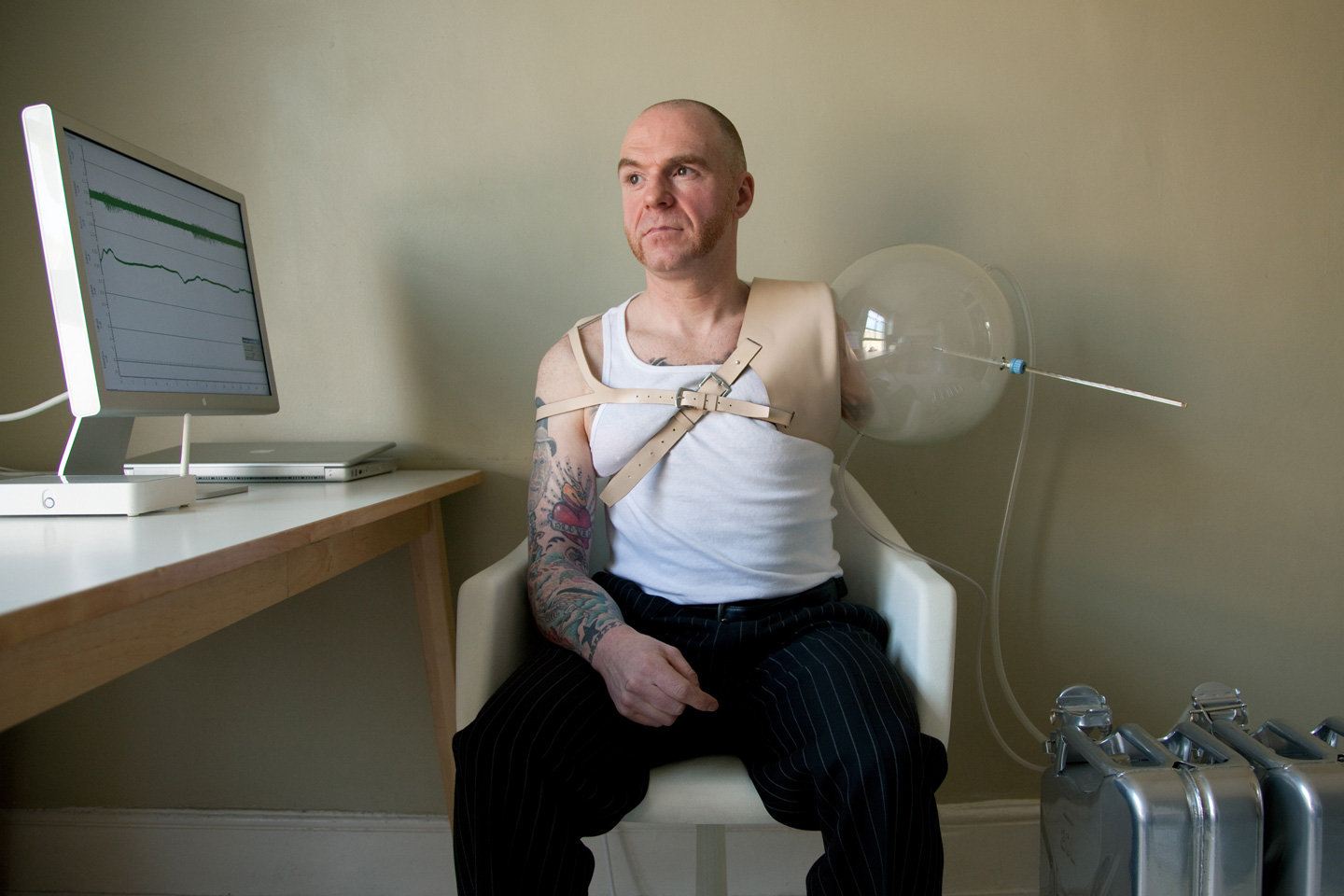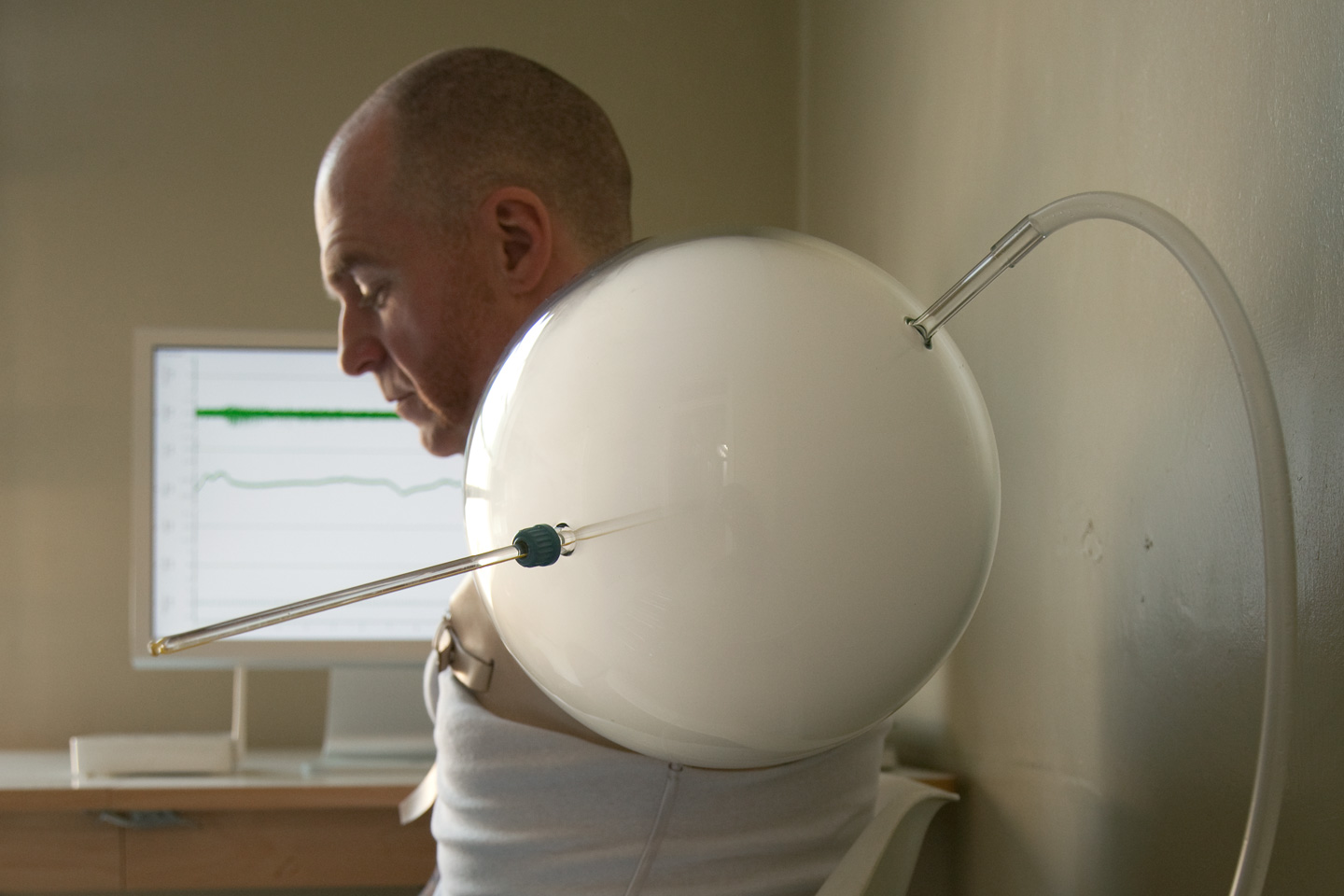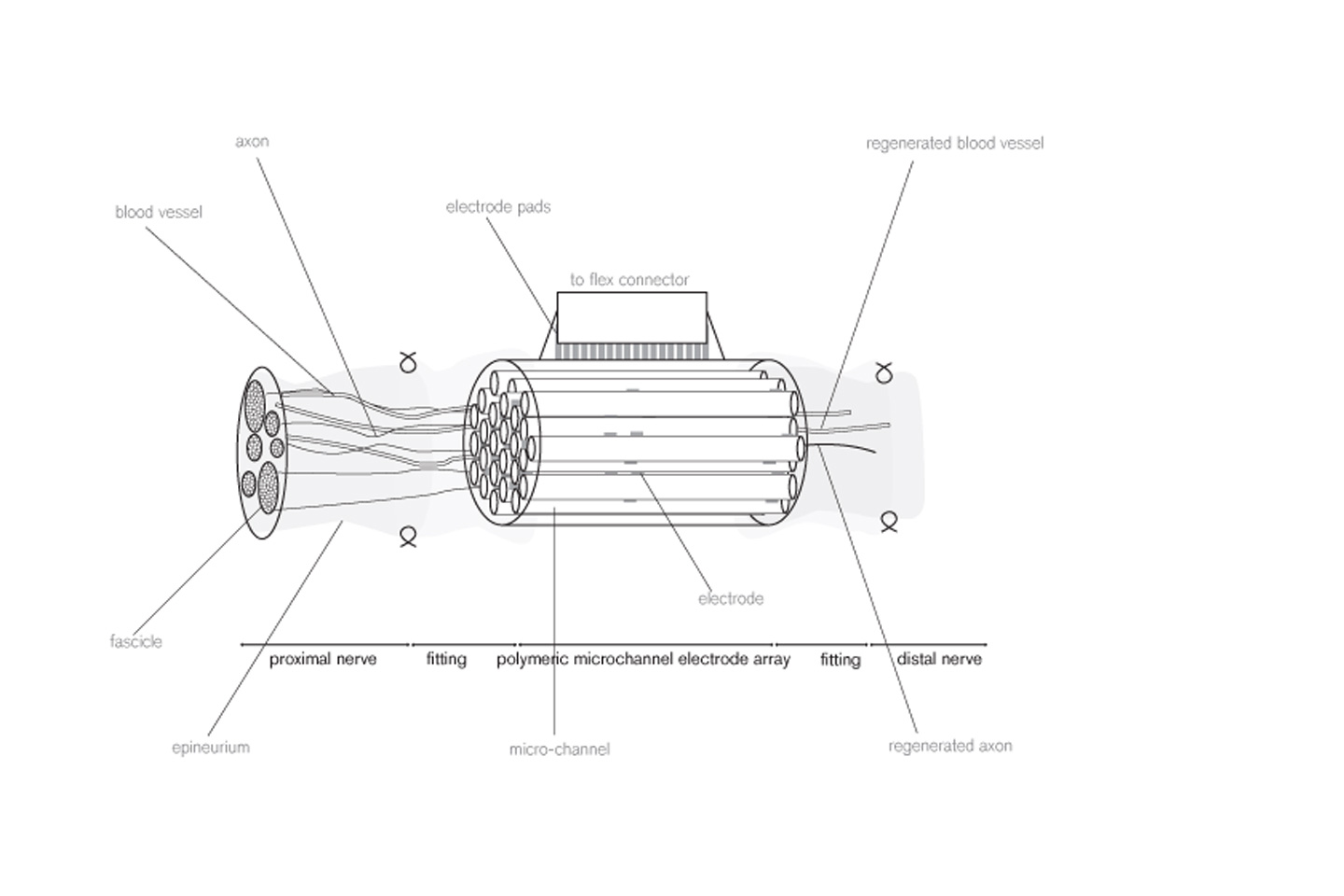When a limb is lost, the mind often develops a phantom sensation. The phantom owner is suddenly endowed with a unique and personal appendage, invisible to others and sometimes capable of extraordinary hyperabilities.
As strategies for repair focus on practical solutions, they tend to overlook poetic functions of our body, but what if one could record and keep their phantom sensation, to be awoken on request?
A novel peripheral nerve interface allows regenerating axons to grow into microchannels incorporating embedded electrodes. This neural implant enables sensations to be inserted to the device, or for activity to be recorded from movements.
Could we use this technology to record illusions of the mind? What if our imagination could be captured through our nerves?
The Phantom Recorder system projects a cold and damp sensation onto the skin surface, triggering the brain to hallucinate a phantom. As the phantom movement stimulates the peripheral nerves, its activity is captured by the neural implant and external wireless machinery.
When the prosthetic has been fitted, digital data of the recorded phantom sensation can be transmitted to the implant, allowing the nerves to recreate the sensation of the telescoped phantom hand, the fourth feet or the split arm.
// In collaboration with the Cambridge Centre for Brain Repair
// Commissioned by Impact! A Royal College of Art and EPSRC collaboration
// Thanks to Richard Eva, Nick Fearn and Lucy Wright





